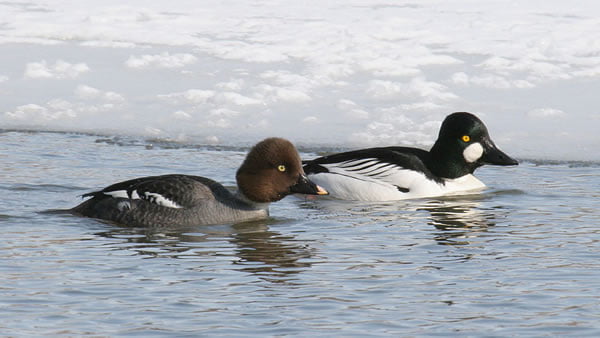Year Funded: 2002 (year endorsed)
Lead Institution(s): University of Alaska Fairbanks
Project Lead: Joshua Schmidt
Collaborator(s): Eric Rexstad (UAF), Eric Taylor (USFWS)
Focal Species: Common Goldeneye (Bucephala clangula)
Project Description: Little is known about the common goldeneye (Bucephala clangula) at the northern limit of its breeding range in Interior Alaska. Approximately 50 km east of Fairbanks, an experimental population has been established and studied in a series of 150 nest boxes since 1997. This project quantified duckling survival in this population and identified important hen and habitat features that influence duckling survival rates. This will help managers decide which segment of the breeding population is likely to contribute more offspring to the population, and which habitats are most important for brood rearing. Also, the nest attendance information will provide insight into females’ energetic demands during incubation.
SDJV36 Interim Report FY04
Related Publications
Schmidt, J. H., E. J. Taylor, and E. A. Rexstad. 2006. Survival of Common Goldeneye Ducklings in Interior Alaska. The Journal of Wildlife Management 70:792–798. https://doi.org/10.2193/0022-541X(2006)70[792:SOCGDI]2.0.CO;2
Schmidt, J. H., E. J. Taylor, and E. A. Rexstad. 2005. Incubation Behaviors and Patterns of Nest Attendance in Common Goldeneyes in Interior Alaska. The Condor 107:167–172. https://doi.org/10.1093/condor/107.1.167
